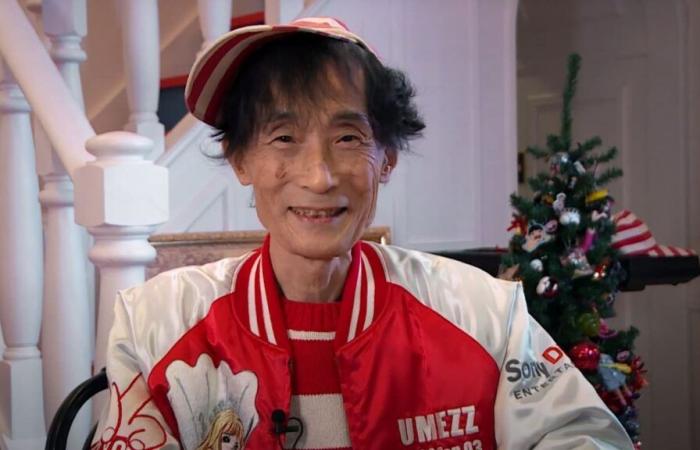The Japanese cartoonist died on October 28 at the age of 88. He had notably signed Makoto-chan, baptism or even The Snake Womanall considered manga classics.
The world of manga loses one of its icons. The mangaka Kazuo Umezu, alias Umezz, author in particular of The School Taken Awaydied of stomach cancer on October 28, Japanese media announced on Tuesday. He was 88 years old.
Recognizable by his red and white sailor shirt, which he wore on all occasions, Kazuo Umezu was not only a master of horror manga, but above all the one who had set its codes. He influenced several generations of artists including Junji Ito.
“Umezu wanted his work to be known around the world, and to be read forever. He believed in the intrinsic artistic value of these works. May this inspire you,” Umezz, his company, said in a statement.
Vulgar humor
In France, where his works are available at Glénat and at Lézard Noir, Kazuo Umezu was best known for The School Taken Awaya disturbing and cruel story about sacrificed childhood, the Japanese equivalent of His Majesty of the Flies.
He narrates the nightmare of 862 children whose school is transposed into a strange desert world. Left to their own devices, they will have to learn to survive as monsters prowl and hunger begins to drive them into madness.
In his stories, Umezu explores psychological horror and often imagines unpredictable twists and turns. His drawings are disturbing and mysterious. His boards, where black is omnipresent, inspire fear.
Alongside his horrific stories, he also signed Makoto-chana comedy series known for its intentionally vulgar humor. His young hero, Makoto, often has snot flowing from his nose.
Sacred in Angoulême
Like many horror manga authors, Umezu began by publishing in shojo magazines, aimed at an audience of teenage girls. It was in one of these magazines that appeared in 1965 and 1966 The Snake Womanhis first success.
A jack of all trades, Umezu showed the extent of his talent by also dabbling in science fiction. In the 1980s, I am Shingo thus depicts the confrontation between two children and a robot who awakens to consciousness.
Winner of the 2018 Angoulême Festival Heritage Prize, this six-volume series left its mark with its formal daring while influencing several artists including Japanese filmmaker Kiyoshi Kurosawa.
An eccentric personality, Umezu also started a music group and designed attractions. Author of 70 stories, he resumed his brushes in 2021 after 26 years of absence for a series of I Am Shingo in the form of acrylic paintings.






